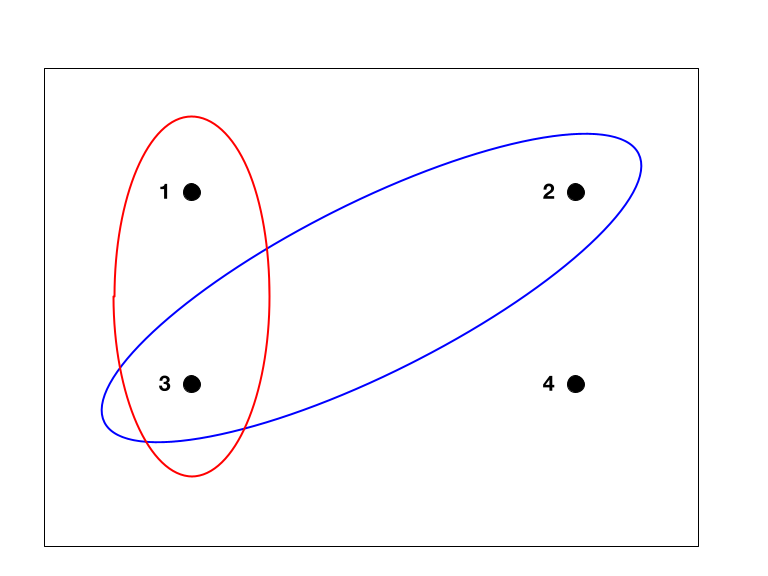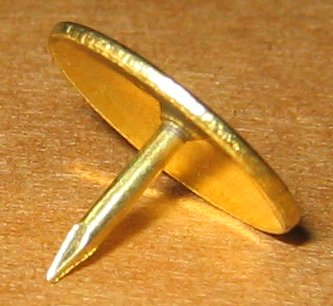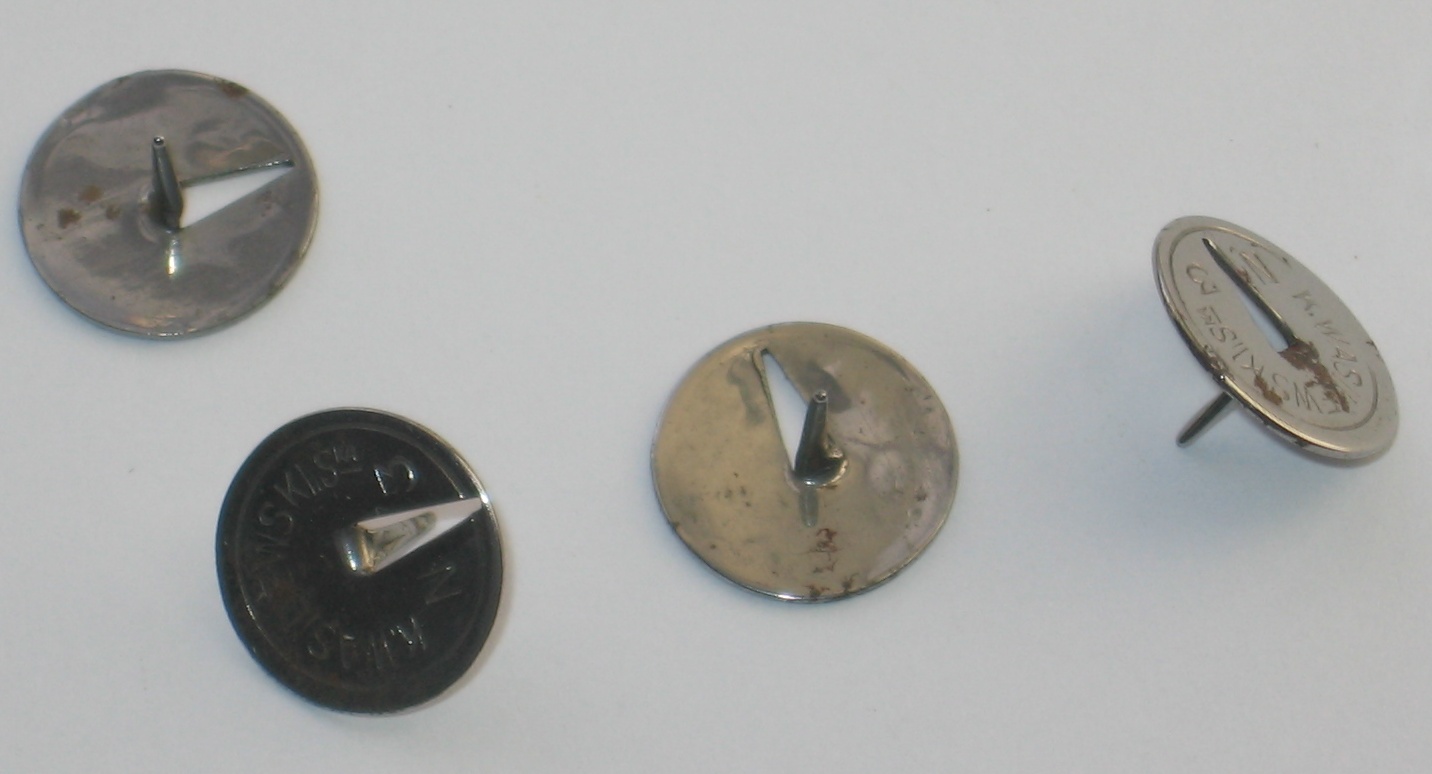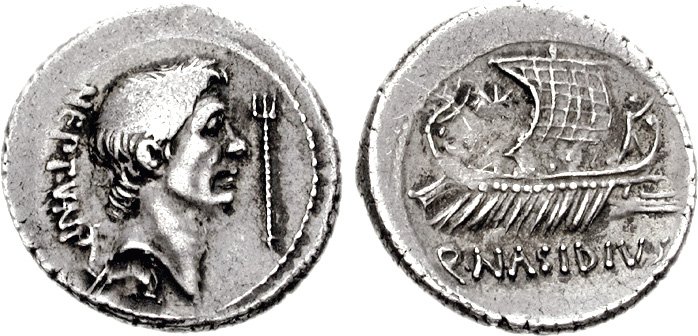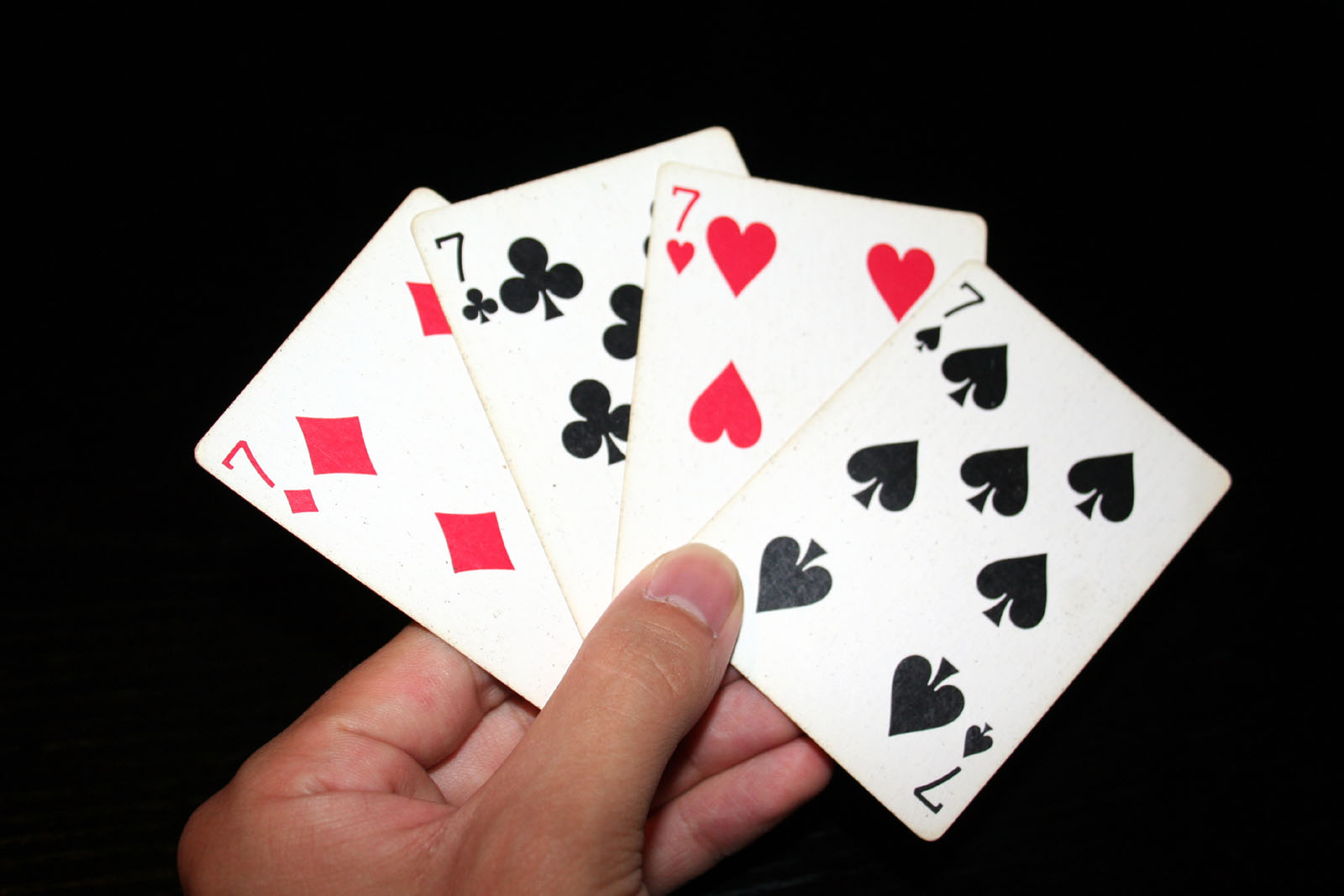|
Sample Space
In probability theory, the sample space (also called sample description space, possibility space, or outcome space) of an experiment or random trial is the set of all possible outcomes or results of that experiment. A sample space is usually denoted using set notation, and the possible ordered outcomes, or sample points, are listed as elements in the set. It is common to refer to a sample space by the labels ''S'', Ω, or ''U'' (for " universal set"). The elements of a sample space may be numbers, words, letters, or symbols. They can also be finite, countably infinite, or uncountably infinite. A subset of the sample space is an event, denoted by E. If the outcome of an experiment is included in E, then event E has occurred. For example, if the experiment is tossing a single coin, the sample space is the set \, where the outcome H means that the coin is heads and the outcome T means that the coin is tails. The possible events are E=\, E=\, E = \, and E = \. For tossing two ... [...More Info...] [...Related Items...] OR: [Wikipedia] [Google] [Baidu] |
Experiment (probability Theory)
In probability theory, an experiment or trial (see below) is any procedure that can be infinitely repeated and has a well-defined set of possible outcomes, known as the sample space. An experiment is said to be ''random'' if it has more than one possible outcome, and ''deterministic'' if it has only one. A random experiment that has exactly two (mutually exclusive) possible outcomes is known as a Bernoulli trial. When an experiment is conducted, one (and only one) outcome results— although this outcome may be included in any number of events, all of which would be said to have occurred on that trial. After conducting many trials of the same experiment and pooling the results, an experimenter can begin to assess the empirical probabilities of the various outcomes and events that can occur in the experiment and apply the methods of statistical analysis. Experiments and trials Random experiments are often conducted repeatedly, so that the collective results may be sub ... [...More Info...] [...Related Items...] OR: [Wikipedia] [Google] [Baidu] |
Outcome (probability)
In probability theory, an outcome is a possible result of an Experiment (probability theory), experiment or trial. Each possible outcome of a particular experiment is unique, and different outcomes are Mutually exclusive events, mutually exclusive (only one outcome will occur on each trial of the experiment). All of the possible outcomes of an experiment form the elements of a sample space. For the experiment where we flip a coin twice, the four possible ''outcomes'' that make up our ''sample space'' are (H, T), (T, H), (T, T) and (H, H), where "H" represents a "heads", and "T" represents a "tails". Outcomes should not be confused with Event (probability theory), events, which are (or informally, "groups") of outcomes. For comparison, we could define an event to occur when "at least one 'heads'" is flipped in the experiment - that is, when the outcome contains at least one 'heads'. This event would contain all outcomes in the sample space except the element (T, T). Sets of outco ... [...More Info...] [...Related Items...] OR: [Wikipedia] [Google] [Baidu] |
Sample Space
In probability theory, the sample space (also called sample description space, possibility space, or outcome space) of an experiment or random trial is the set of all possible outcomes or results of that experiment. A sample space is usually denoted using set notation, and the possible ordered outcomes, or sample points, are listed as elements in the set. It is common to refer to a sample space by the labels ''S'', Ω, or ''U'' (for " universal set"). The elements of a sample space may be numbers, words, letters, or symbols. They can also be finite, countably infinite, or uncountably infinite. A subset of the sample space is an event, denoted by E. If the outcome of an experiment is included in E, then event E has occurred. For example, if the experiment is tossing a single coin, the sample space is the set \, where the outcome H means that the coin is heads and the outcome T means that the coin is tails. The possible events are E=\, E=\, E = \, and E = \. For tossing two ... [...More Info...] [...Related Items...] OR: [Wikipedia] [Google] [Baidu] |
Probability Theory
Probability theory or probability calculus is the branch of mathematics concerned with probability. Although there are several different probability interpretations, probability theory treats the concept in a rigorous mathematical manner by expressing it through a set of axioms of probability, axioms. Typically these axioms formalise probability in terms of a probability space, which assigns a measure (mathematics), measure taking values between 0 and 1, termed the probability measure, to a set of outcomes called the sample space. Any specified subset of the sample space is called an event (probability theory), event. Central subjects in probability theory include discrete and continuous random variables, probability distributions, and stochastic processes (which provide mathematical abstractions of determinism, non-deterministic or uncertain processes or measured Quantity, quantities that may either be single occurrences or evolve over time in a random fashion). Although it is no ... [...More Info...] [...Related Items...] OR: [Wikipedia] [Google] [Baidu] |
Thumb Tack
A drawing pin (in British English) or thumb tack (in North American English), also called a push-pin, is a short, small pin or nail with a flat, broad head that can be pressed into place with pressure from the thumb, often used for hanging light articles on a wall or noticeboard. Thumb tacks made of brass, tin or iron may be referred to as brass tacks, brass pins, tin tacks or iron tacks, respectively. These terms are particularly used in the idiomatic expression ''to come'' (or ''get'') ''down to brass'' (or otherwise) ''tacks'', meaning to consider basic facts of a situation. History The drawing pin was invented in name and first mass-produced in what is now the United States in the mid/late 1750s; the earliest use of the term "drawing pin" is listed in the Oxford English Dictionary as 1812. It was said that the use of the newly invented drawing pin to attach notices to school house doors was making significant contribution to the whittling away of their gothic doors. ... [...More Info...] [...Related Items...] OR: [Wikipedia] [Google] [Baidu] |
Brass Thumbtack
Brass is an alloy of copper and zinc, in proportions which can be varied to achieve different colours and mechanical, electrical, acoustic and chemical properties, but copper typically has the larger proportion, generally copper and zinc. In use since prehistoric times, it is a substitutional alloy: atoms of the two constituents may replace each other within the same crystal structure. Brass is similar to bronze, a copper alloy that contains tin instead of zinc. Both bronze and brass may include small proportions of a range of other elements including arsenic, lead, phosphorus, aluminium, manganese and silicon. Historically, the distinction between the two alloys has been less consistent and clear, and increasingly museums use the more general term " copper alloy". Brass has long been a popular material for its bright gold-like appearance and is still used for drawer pulls and doorknobs. It has also been widely used to make sculpture and utensils because of its low mel ... [...More Info...] [...Related Items...] OR: [Wikipedia] [Google] [Baidu] |
Coin Tossing
Coin flipping, coin tossing, or heads or tails is using the thumb to make a coin go up while spinning in the air and checking obverse and reverse, which side is showing when it is down onto a surface, in order to randomly choose between two alternatives. It is a form of sortition which inherently has two possible outcomes. History Coin flipping was known to the Romans as ''navia aut caput'' ("ship or head"), as some coins had a ship on one side and the head of the Roman Emperor, emperor on the other. In England, this was referred to as ''cross and pile''. Process During a coin toss, the coin is thrown into the air such that it rotates edge-over-edge an unpredictable number of times. Either beforehand or when the coin is in the air, an interested party declares "heads" or "tails", indicating which side of the coin that party is choosing. The other party is assigned the opposite side. Depending on custom, the coin may be caught; caught and inverted; or allowed to land on the g ... [...More Info...] [...Related Items...] OR: [Wikipedia] [Google] [Baidu] |
Cartesian Product
In mathematics, specifically set theory, the Cartesian product of two sets and , denoted , is the set of all ordered pairs where is an element of and is an element of . In terms of set-builder notation, that is A\times B = \. A table can be created by taking the Cartesian product of a set of rows and a set of columns. If the Cartesian product is taken, the cells of the table contain ordered pairs of the form . One can similarly define the Cartesian product of sets, also known as an -fold Cartesian product, which can be represented by an -dimensional array, where each element is an -tuple. An ordered pair is a 2-tuple or couple. More generally still, one can define the Cartesian product of an indexed family of sets. The Cartesian product is named after René Descartes, whose formulation of analytic geometry gave rise to the concept, which is further generalized in terms of direct product. Set-theoretic definition A rigorous definition of the Cartesian product re ... [...More Info...] [...Related Items...] OR: [Wikipedia] [Google] [Baidu] |
Suit (cards)
In playing cards, a suit is one of the categories into which the cards of a deck are divided. Most often, each card bears one of several pips (symbols) showing to which suit it belongs; the suit may alternatively or additionally be indicated by the color printed on the card. The rank for each card is determined by the number of pips on it, except on face cards. Ranking indicates which cards within a suit are better, higher or more valuable than others, whereas there is no order between the suits unless defined in the rules of a specific card game. In most decks, there is exactly one card of any given rank in any given suit. A deck may include special cards that belong to no suit, often called jokers. While English-speaking countries traditionally use cards with the French suits of Clubs, Spades, Hearts and Diamonds, many other countries have their own traditional suits. Much of central Europe uses German suited cards with suits of Acorns (Clubs), Leaves (Spades), Hear ... [...More Info...] [...Related Items...] OR: [Wikipedia] [Google] [Baidu] |
Playing Card
A playing card is a piece of specially prepared card stock, heavy paper, thin cardboard, plastic-coated paper, cotton-paper blend, or thin plastic that is marked with distinguishing motifs. Often the front (face) and back of each card has a finish to make handling easier. They are most commonly used for playing card games, and are also used in magic tricks, cardistry, card throwing, and card houses; cards may also be collected. Playing cards are typically palm-sized for convenient handling, and usually are sold together in a set as a deck of cards or pack of cards. The most common type of playing card in the West is the French-suited, standard 52-card pack, of which the most widespread design is the English pattern, followed by the Belgian-Genoese pattern. However, many countries use other, traditional types of playing card, including those that are German, Italian, Spanish and Swiss-suited. Tarot cards (also known locally as ''Tarocks'' or ''tarocchi'') are an ol ... [...More Info...] [...Related Items...] OR: [Wikipedia] [Google] [Baidu] |
Abstraction
Abstraction is a process where general rules and concepts are derived from the use and classifying of specific examples, literal (reality, real or Abstract and concrete, concrete) signifiers, first principles, or other methods. "An abstraction" is the outcome of this process — a concept that acts as a common noun for all subordinate concepts and connects any related concepts as a ''group'', ''field'', or ''category''.Suzanne K. Langer (1953), ''Feeling and Form: A Theory of Art Developed from Philosophy in a New Key'', p. 90: "Sculpture, Sculptural form is a powerful abstraction from actual objects and the three-dimensional space which we construe ... through sensory system, touch and sight." Conceptual abstractions may be made by filtering the information content of a concept or an observable phenomenon, selecting only those aspects which are relevant for a particular purpose. For example, abstracting a leather soccer ball to the more general idea of a ball selects only the in ... [...More Info...] [...Related Items...] OR: [Wikipedia] [Google] [Baidu] |
Cambridge University Press
Cambridge University Press was the university press of the University of Cambridge. Granted a letters patent by King Henry VIII in 1534, it was the oldest university press in the world. Cambridge University Press merged with Cambridge Assessment to form Cambridge University Press and Assessment under Queen Elizabeth II's approval in August 2021. With a global sales presence, publishing hubs, and offices in more than 40 countries, it published over 50,000 titles by authors from over 100 countries. Its publications include more than 420 academic journals, monographs, reference works, school and university textbooks, and English language teaching and learning publications. It also published Bibles, runs a bookshop in Cambridge, sells through Amazon, and has a conference venues business in Cambridge at the Pitt Building and the Sir Geoffrey Cass Sports and Social Centre. It also served as the King's Printer. Cambridge University Press, as part of the University of Cambridge, was a ... [...More Info...] [...Related Items...] OR: [Wikipedia] [Google] [Baidu] |
